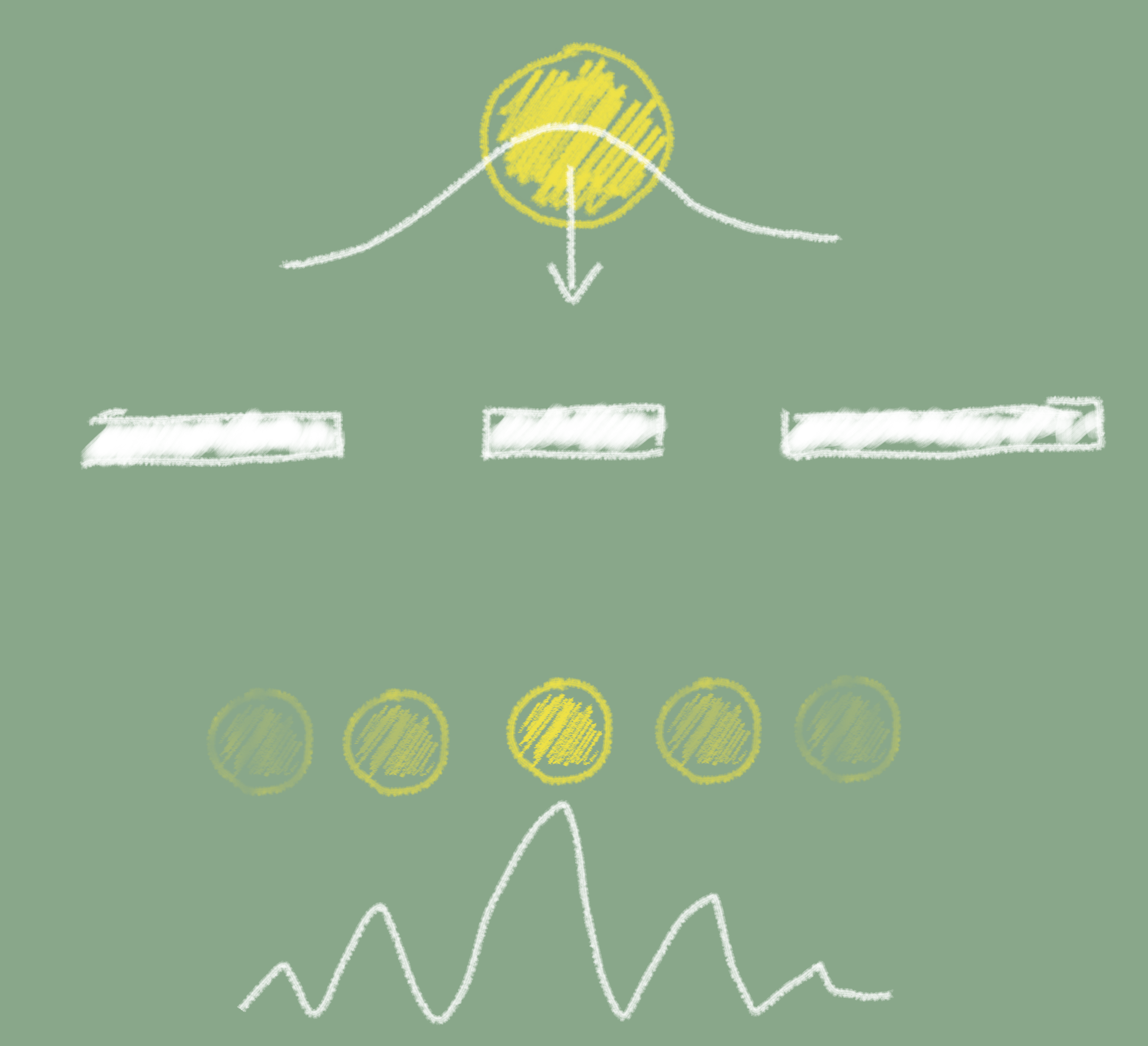PhD position available! Check our openings for more information.
Research
In our experiment, we manipulate macroscopic systems and make them behave according to the laws of quantum physics. We want to explore the terra incognita of quantum mechanics at large masses and length scales.
Levitation of Solids

At the core of our experiments lies a levitated solid object. In our laboratory, we routinely achieve levitation using either lasers or oscillating radio-frequency electric fields. The objects we levitate are typically nanometer-sized and contain billions of atoms, often arranged in a disordered structure.
Despite this internal complexity, all these atoms collectively contribute to the object’s center-of-mass motion, which, when placed in vacuum, becomes nearly frictionless. This unique platform provides an ideal testbed for exploring the fundamental laws of quantum physics on macroscopic scales.
Macroscopic Quantum Mechanics
In our experiments, we realize a Heisenberg microscope—not to observe a single elementary particle, but to track a nanosphere composed of billions of atoms. By measuring its position, we witness how our observation itself disturbs the nanoparticle’s motion, a hallmark of quantum mechanics.
This highly precise microscope allows us to monitor and control the motion of the levitated nanoparticle in real time. By leveraging this control, we can prepare quantum states that are close to the lowest energy level allowed by quantum mechanics (the ground state) or states where the uncertainty in position or momentum is reduced below its zero-point fluctuations (squeezed states).
Moreover, we can detect quantum correlations imprinted on the laser light scattered by the moving nanoparticle—correlations that underpin one of the most fundamental aspects of quantum physics: entanglement between the nanoparticle and the scattered photons.
Looking ahead, we aim to push the frontiers of macroscopic quantum physics even further. Can we blur the nanoparticle’s position across a distance comparable to its own diameter? Is it possible to place the nanoparticle in a Schrödinger’s cat state, with its wavefunction split across a macroscopic distance? And ultimately, what gravitational force does such a quantum superposition generate?

Measurements at the Quantum Limits
Low-dissipation mechanical resonators can oscillate for extended periods when perturbed by an external force. This makes them highly effective for sensing, as their oscillations can be monitored with increasing precision to infer the force’s strength. Such force sensors are ubiquitous in science and technology, from microelectromechanical systems (MEMS) in smartphones to kilogram-scale pendulums in gravitational wave observatories.
However, quantum mechanics imposes a fundamental limit: the more precisely we measure these oscillations, the more we disturb them—a phenomenon known as quantum backaction.
In our research, we explore this trade-off between measurement imprecision and quantum backaction using a specially engineered nanomechanical membrane resonator, probed by a laser beam. Our experiments allow us to directly observe quantum backaction in action. Furthermore, by harnessing quantum states of light, we can overcome this limit and enhance the sensitivity of our measurements beyond the classical constraints.